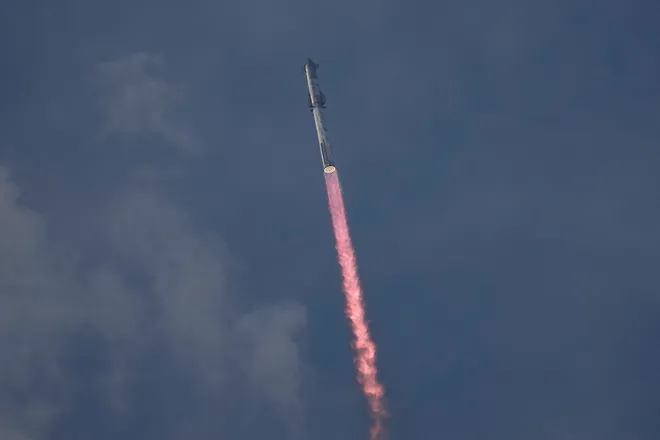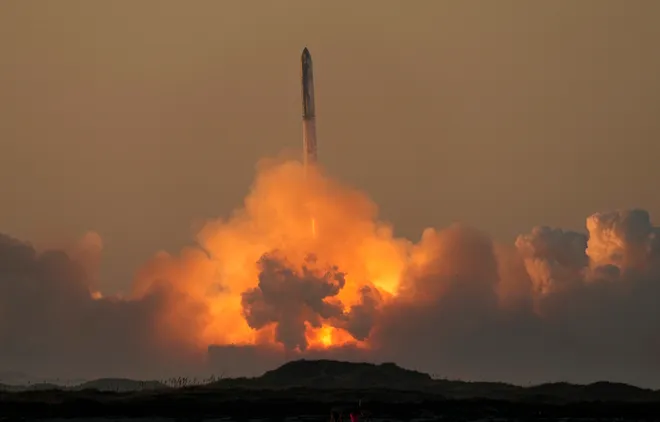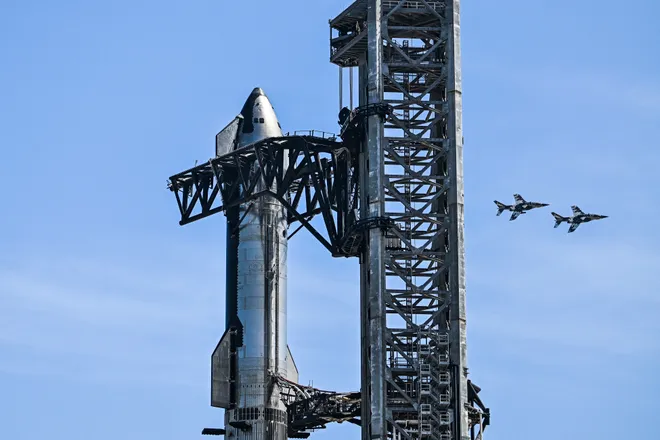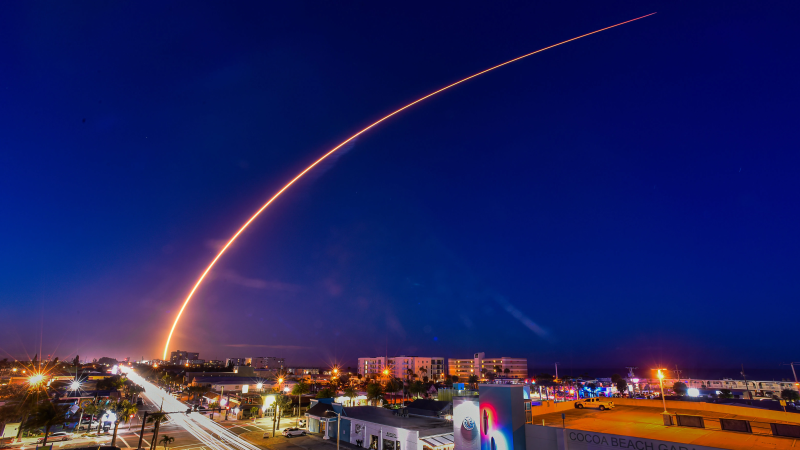SpaceX launch: Starship reaches new heights before being lost on re-entry over Indian Ocean
The SpaceX Starship rocket that will one day ferry NASA astronauts from lunar orbit to the moon's surface made it to space during its latest test, but did not survive its return to Earth's atmosphere before it could splash down in the Indian Ocean.
Thursday morning's launch of the mega rocket came about four months after the company's second test of Starship once again ended in a spectacular explosion. However, Elon Musk's aerospace company has noted that Starship went farther in November than the inaugural attempt in April.
Its latest flight went even further.
SpaceX had high expectations for the third go-around, which commentators on a live feed Thursday noted far surpassed what the company had achieved in previous attempts. The success is a positive sign for not only SpaceX, but also NASA, which awarded the company a $2.9 billion contract in 2021 to develop the first commercial human lander for its upcoming Artemis III mission to the moon.
"I'm just completely blown away," said Dan Huot, SpaceX communications manager, who helped to host the live webcast. "We're farther than we've ever been before."

Japan rocket explosion:Space One Kairos rocket explodes while trying to take satellite to orbit
Watch the full replay of SpaceX Starship launch
A livestream of the SpaceX launch on X began roughly 30 minutes before the launch time of 9:25 a.m. ET.
As before, the launch took place at SpaceX’s private Starbase site in Boca Chica, Texas, near Brownsville on the Gulf of Mexico.
Watch a replay here:
What did SpaceX's latest Starship test flight accomplish?
The Starship succeeded in separating Thursday from the booster and proceeding to orbit within minutes of launching, where it conducted a series of in-flight tests while coasting through space.
Video of its flight was beamed back to Earth using SpaceX's Starlink Satellite network. While the video captured the beginning of the spacecraft's re-entry into Earth's atmosphere, the signal was lost about an hour into the mission before SpaceX concluded that the craft likely broke apart.
Despite Starship's failure to make its planned splashdown in the Indian Ocean, SpaceX said the rocket still achieved several key milestones that had not been accomplished in the past two tests aimed to show how well the rocket's two stages work together in flight.
Early into the launch, SpaceX observed that all 33 of its Raptor engines in the booster worked as expected. Shortly thereafter, the Super Heavy booster stage separated from the Starship's upper stage and fell to Earth as the rocket made its way into orbit.
SpaceX also reported a successful opening of the upper Starship rocket stage – a crucial capability that will allow the rocket to one day deploy Starlink satellites.
Plans to attempt the first ever re-light of one of its upper stage Raptor engines while in space were scrapped, but SpaceX did conduct a propellant transfer test and succeeded in opening and closing the payload door.
Musk has said he hopes there will be a half-dozen flights this year for Starship, which he said said Thursday on his social media site X "will make life multiplanetary."
What happened during the last Starship test?

The second launch test of the Starship on Nov. 18 saw the rocket explode after about 12 minutes into flight.
While the rocket was able to achieve a stage separation and reach space, ground crew lost communications with it after nine minutes. Still, that was a marked improvement over the previous Starship test flight on April 20 in which several of the spacecraft's engines failed and exploded about four minutes after its launch before booster and spacecraft were able to even separate.
“The real topping on the cake today, that successful liftoff,” SpaceX commentator John Insprucker said after the November test, as reported by the Associated Press.
Insprucker noted that for the first time, all 33 booster engines fired as designed and the booster separated seamlessly from the spaceship, which reached an altitude of 92 miles.
How is Starship involved in NASA moon missions?

Classified as a super heavy-lift launch vehicle, the 400-foot-long Starship rocket is the biggest and most powerful rocket ever built.
NASA is paying SpaceX a hefty sum with the expectation that Musk's company will be able to develop a spacecraft capable of safely transporting astronauts to the moon's surface – likely in 2026. Starship would need to be able to transfer U.S. astronauts onboard from NASA's Orion capsule while in lunar orbit before heading down to the surface.
NASA had intended to launch its Artemis II astronauts into orbit by the end of the year on a 10-day trip circumnavigating the moon ahead of a moon landing itself a year later for Artemis III. But the Artemis program missions have since been delayed by at least a year after NASA encountered a slew of issues.
Once NASA is back on track in the years ahead, the agency intends to send a crew to the moon's unexplored south polar region, which Houston-based Intuitive Machines Odysseus spacecraft recently explored and studied.
The astronauts who eventually reach the surface of the moon for the first time in America's history since the Apollo program came to an end in 1972 will play a crucial role in future space exploration: NASA hopes those spacefarers will establish a permanent human presence on and around the moon ahead of missions to Mars.
SpaceX's Starship rocket would be used to launch those future Martian missions, too.

"Congrats to SpaceX on a successful test flight," NASA Administrator Bill Nelson said Thursday in a post on X. "Starship has soared into the heavens. Together, we are making great strides through Artemis to return humanity to the Moon – then look onward to Mars."
Contributing: Mike Snider; The Associated Press
Eric Lagatta covers breaking and trending news for USA TODAY. Reach him at elagatta@gannett.com
Disclaimer: The copyright of this article belongs to the original author. Reposting this article is solely for the purpose of information dissemination and does not constitute any investment advice. If there is any infringement, please contact us immediately. We will make corrections or deletions as necessary. Thank you.






